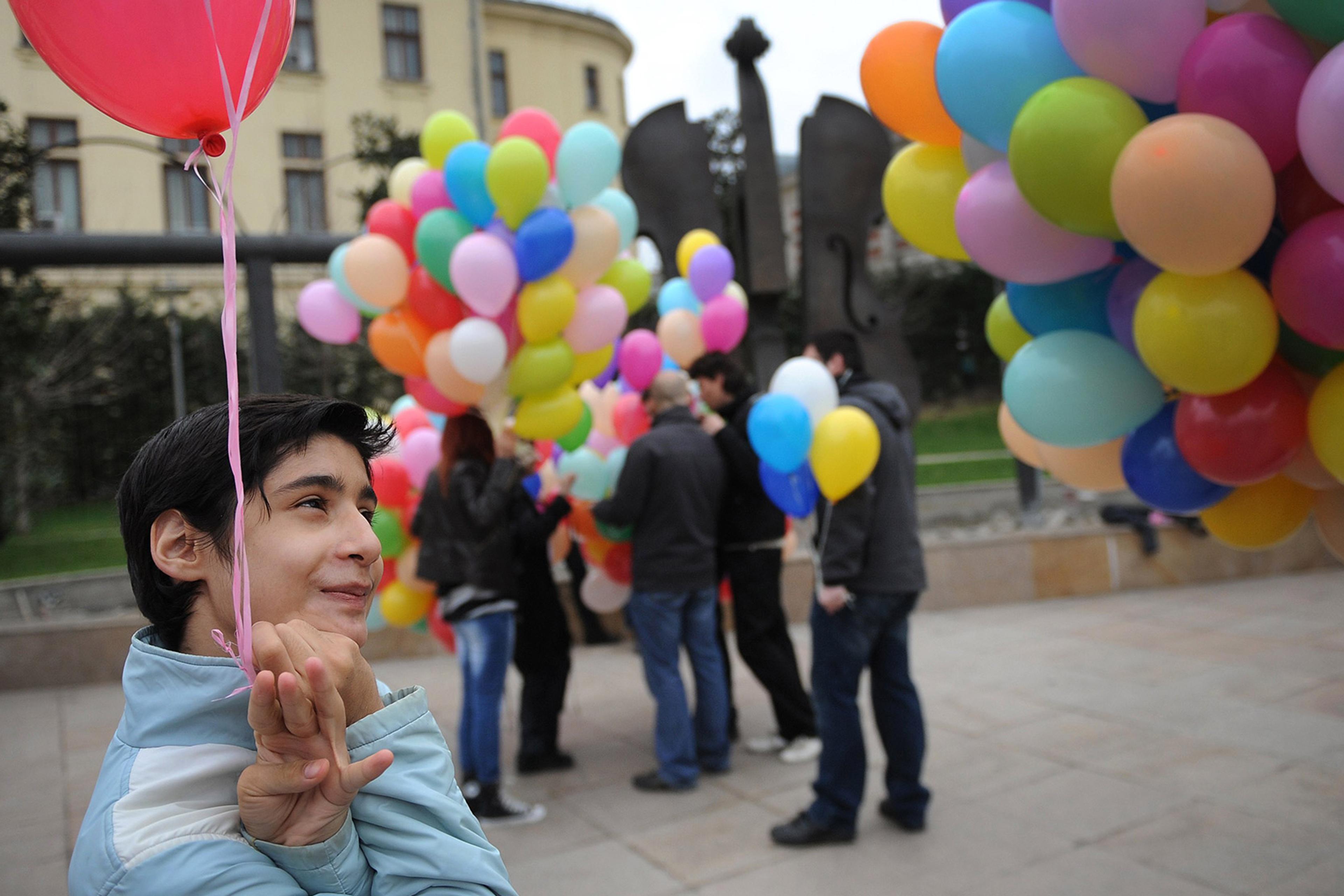In 2013, Seattle Children’s Hospital ran an ad on buses featuring a smiling child alongside the tagline: ‘Let’s wipe out cancer, diabetes and autism in his lifetime.’ Equating autism – a fundamental part of many people’s identities – to life-threatening diseases felt like a slap in the face to many in the community. The ads were swiftly pulled, highlighting a growing shift in thinking about autism as well as other neurological differences.
The ongoing paradigm shift has empowered many people to reclaim their identities. The concept of neurodiversity, developed in the 1990s, was inspired by the disability rights movement and its focus on accommodating differences rather than curing them. The neurodiversity movement has likewise pushed for greater acceptance and support, challenging the ‘pathology paradigm’ that views conditions like autism only as deficits to be treated.
Instead, the neurodiversity paradigm urges society to accept people as they are and to foster environments where neurodivergent individuals can thrive. Over the past two decades, advocacy groups have gained traction, leading to the adoption of individualised education programmes, flexible work arrangements, sensory-friendly environments and more. Figures such as Temple Grandin and Greta Thunberg can now proudly embrace their autism as a valued identity, even as critical to their success. Nick Walker, an autistic self-advocate and leading theorist in neurodiversity, writes: ‘Professionals who truly understand the neurodiversity paradigm would no sooner attempt to “treat” a client’s autism than attempt to “treat” a client’s homosexuality, or attempt to “treat” a client’s membership in an ethnic minority group.’ Other differences, such as ADHD, can fit under the neurodivergent umbrella as well, with some people viewing their distractibility and hyperactivity as endearing quirks or assets.
Despite these positive developments, the paradigm shift has also raised a tough question: is it enough to frame neurodivergence solely as a difference (akin to race or sexual orientation), never a deficit? Such an uncompromising approach has led some to roundly oppose the neurodiversity paradigm. Critics argue that it paints too rosy a picture, glossing over the struggles of those with severe neurological conditions. Some autistic people can’t communicate with others or live independently, even with support and accommodations. ADHD, too, can be debilitating. For the writer Yasmin Tayag, treatment for ADHD was a revelation, freeing her from ‘impulsivity and recklessness, angry outbursts, and frantic thoughts’, she wrote in The Atlantic.
A false choice lurks in the debate over neurodiversity. Instead of framing neurodivergence as strictly a difference to preserve or a deficit to be cured, we can employ a more nuanced view of human cognition. I use the term ‘cognitive continuity’ to emphasise that all psychological traits – whether they are associated with the label ‘neurodivergent’ or not – exist on a continuum. Human brains exhibit a wide range of functioning across many dimensions, and the lines between categories are blurry.
From this perspective, neurological differences are a matter of degree, not kind. Of course, it can be insensitive for a neurotypical person to proclaim that they’re ‘probably on the spectrum’ or ‘a little ADHD’. Such comparisons, when made clumsily, risk trivialising the barriers faced by an autistic person who can’t maintain eye contact during a job interview or someone with ADHD who gets distracted and forgets about their child’s piano recital. The comparisons, nevertheless, contain some truth. Forgetfulness, racing thoughts, sensory sensitivity, difficulty engaging with others – these are dimensions of human experience that are not restricted to narrow categories of people. Thinking about the characteristics as being on a continuum – many of us possess them to a greater or lesser degree – is not only accurate, it can also promote a sense of unity. It helps us see that neurodivergent characteristics are part of the broader human condition.
It can be tempting to simply distinguish between overall levels of autism, ADHD, or other diagnostic categories. Maybe ‘mild’ autism and ADHD are better thought of in terms of mere differences, while ‘severe’ or ‘profound’ cases cross into disability? But this fails to account for the complexity of human experience. Autistic people with low support needs – like Jonathan Mitchell or the late Donna Williams – sometimes still view their autism as a source of adversity, even in accommodating environments. In her memoir Somebody Somewhere (1994), Williams asserts adamantly that ‘AUTISM IS NOT ME’, describing it instead as ‘just an information-processing problem that controls who I appear to be’.
Cognitive ability or disability can depend on context. In coming to terms with her autism diagnosis, Maia Szalavitz realised, as she wrote in The New York Times, that: ‘in the correct context, my obsessiveness, sensitivity and intense interests helped make me successful as a writer’. Many people with ADHD flounder in rigid settings, such as a lengthy classroom lecture, but thrive where quick thinking and creativity are key. Even when other people are accepting of one’s neurotype, one can inhabit an ‘interwoven web’ of identity and disorder, as Matilda Boseley described her relationship with ADHD in an article for The Guardian.
Being highly conscientious might exacerbate the self-doubt of someone who is also high in neuroticism
A helpful way to think about this is to look at neurodivergence through the lens of personality. The traits recognised by personality psychologists – traits on which every individual rates high, low, or somewhere in between – can be sources of strength or deficit, depending on the context. A high level of agreeableness can make someone a treasured team player; within a competitive company, it might make them a pushover. Similarly, a high level of extraversion could be a powerful asset for networking and leadership. But an extravert might also sometimes come across as phoney or self-absorbed. For their part, some of those who are low on extraversion – ie, introverts – are happy to embrace their limited social battery, asking friends to respect their need to recharge in solitude. Other introverts, concerned about isolation and withering friendships, might work toward becoming more extraverted.
The complexity deepens when different personality traits intertwine. Being highly conscientious – disciplined and goal-oriented – might exacerbate the self-doubt and loneliness of someone who is also high in neuroticism and prone to negative emotions. (Or, if you prefer the Myers-Briggs framework, an INTJ ‘architect’ might find her introversion less problematic than the ISFP ‘artist’ does.)
Personality traits are standardly thought of as dimensional and multifaceted in these ways, which can be usefully applied to neurodivergent traits as well. For one autistic person, a high level of sensory sensitivity and differences in communication might hamper their dream of launching a business. For another, the same traits could promote artistic success. Similarly, one person with ADHD might reasonably take a pill that helps her be a more patient parent and a less impulsive boss, while her friend is grateful for hyperactive thinking and excitability, which help him thrive as a tour guide.
It’s a mistake to look only at broad categories – like autism and ADHD – and try to decide whether they are deficits or mere differences. A personality model allows neurodivergent people to use either the difference or deficit frame to support their flourishing. By seeing aspects of her ADHD as a disorder, Tayag reframed her ‘quirks as symptoms’, unlocking treatments that felt like a godsend. For others, a ‘mere difference’ lens better promotes their wellbeing, allowing them to embrace aspects of who they are rather than trying in vain to change through treatment.
Of course, it is not always easy to determine whether a trait is having adverse effects on one’s life. A proud introvert might not notice his creeping isolation, even as it raises the risk of depression or other health problems. Likewise, the impulsivity and emotional swings associated with ADHD might seem harmless to someone who’s always had them, even when, in certain contexts, they have real costs. Autistic traits might fuel a person’s brilliant engineering career while quietly closing off a love connection. Although neurotypes aren’t inherently good or bad, their contribution to one’s flourishing or suffering isn’t simply a choice. A person can’t always control whether a trait – even one they accept and value – is hurting or harming them in certain ways.
A nuanced take on neurodiversity allows for both acceptance and intervention. Schools, workplaces and healthcare systems should not assume that one way of thinking or being is categorically ‘normal’ and that deviations are deficits. At the same time, individuals and institutions shouldn’t be discouraged from pursuing treatments when neurodivergence is causing distress or limiting valuable opportunities.
The key is to build bridges of compassion across the neurological continuum. Instead of expecting or forcing neurodivergent people to always fit neurotypical moulds, the people in their lives can make accommodations – while recognising that those aren’t always enough. For some, medication or therapy is essential to managing real challenges that come with their neurotype. However, as the neurodivergent academic Robert Chapman argues, we should resist pathologising by default.
Offering treatment to those who want it isn’t necessarily a form of prejudice or oppression
Just as being highly introverted can be seen as a mere difference in temperament, traits associated with autism and other neurotypes can be understood as reflecting natural variations in brain function. At the same time, neurological differences can pose challenges even in the most accommodating societies. Both perspectives can hold true. Rather than presenting a false choice – between ‘differences to celebrate’ or ‘deficits to fix’ – we can recognise that a neurotype’s impact on wellbeing depends on the individual and context.
The neurodiversity movement has made great strides in dismantling stigma and expanding accommodations. Offering treatment to those who want it, however, isn’t necessarily a form of prejudice or oppression. As we continue to examine what it means to be neurodivergent, it’s important to resist binary thinking and fully embrace the complexity of being human.








